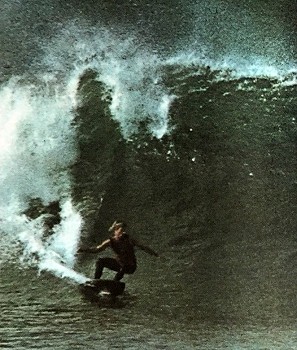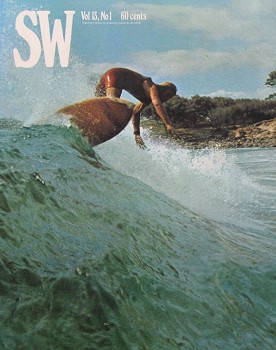Midget
Farrelly
Australia, the
southern hemishere's capital
is in danger of becoming
a second-rate surfing nation, "new-era" fanatics and the
take
note.
What this country is in dire need of
is an international contest.
I don't mean a world contest, not
necessarily an equally represented international
contest, not necessarily an A.S.A. contest.
Why, those humble surfing
countries of France, Peru, and Mexico have
internationals and sponsor surfers.
The mighty Hawaii has its annual Makaha and
the Duke is achieving an international status unmatched.
France and
the other countries recognize the
stimulus these events give to their
surfing standard.
Filipe Pomar graduated from international in Peru to
win the World Contest in 1965.
Now that competitive surfing in Australia is Iike
league football in structure it is tending to
become humdrum.
The A.S.A.
has achieved competitive surfing for the
average; for the average surfer, to the average surfer, by the average surfer.
The average surfer
now needs
to be stimulated, to diversify in style and be shown new
techniques.
The average surfer needs
to see
exciting radical, free ripping surfing that only comes with experienced, travelling
pros, riding big and quality waves.
These guys should be seen riding
at Bells or Forresters, or Maragrets.
Waves, big waves are what put surfers to
the test, make judges think, make the crowd roar and
look wild
on T.V.
Judging this event would be
difficult for the average A.S.A. judge ans a smaller
than usual panel of versatile surfing-judging type people, who have
travelled to surfing
countries outside
Australia would be necessary to furnish any half-fair
result.
The type of Australian
surfers we
would need to compete would be more in the class
of Peter Drouyn,
John Monie and Ricky Tyota, guts up and ready for
anything.
Namely big waves.



